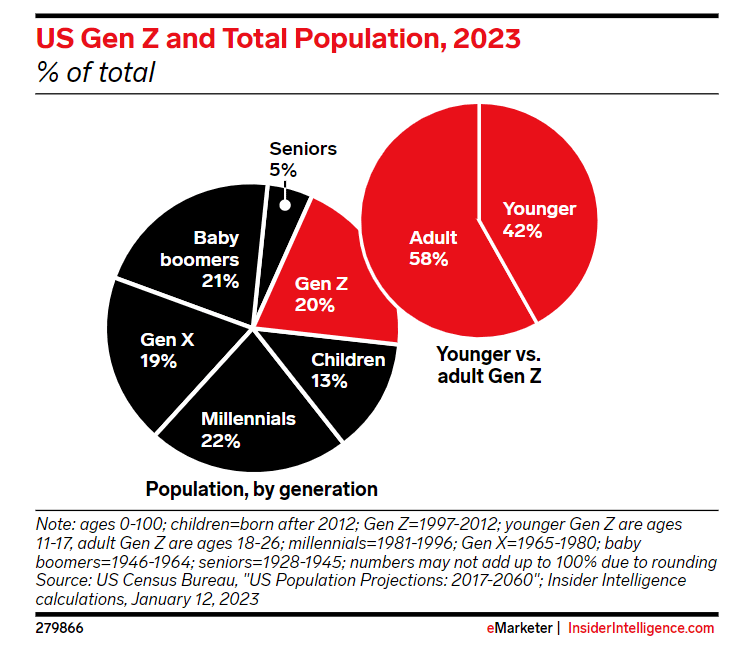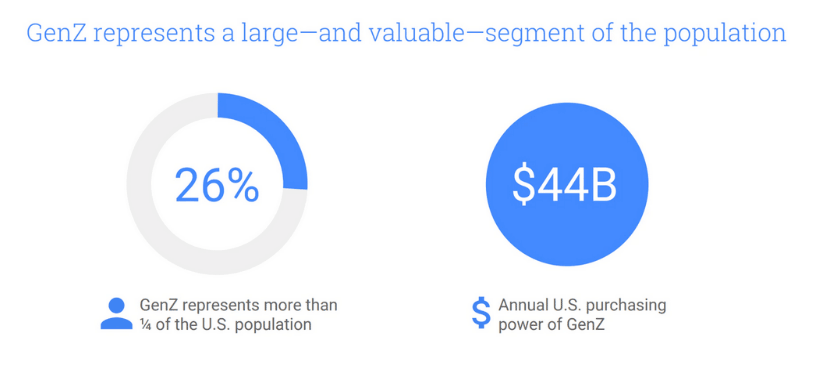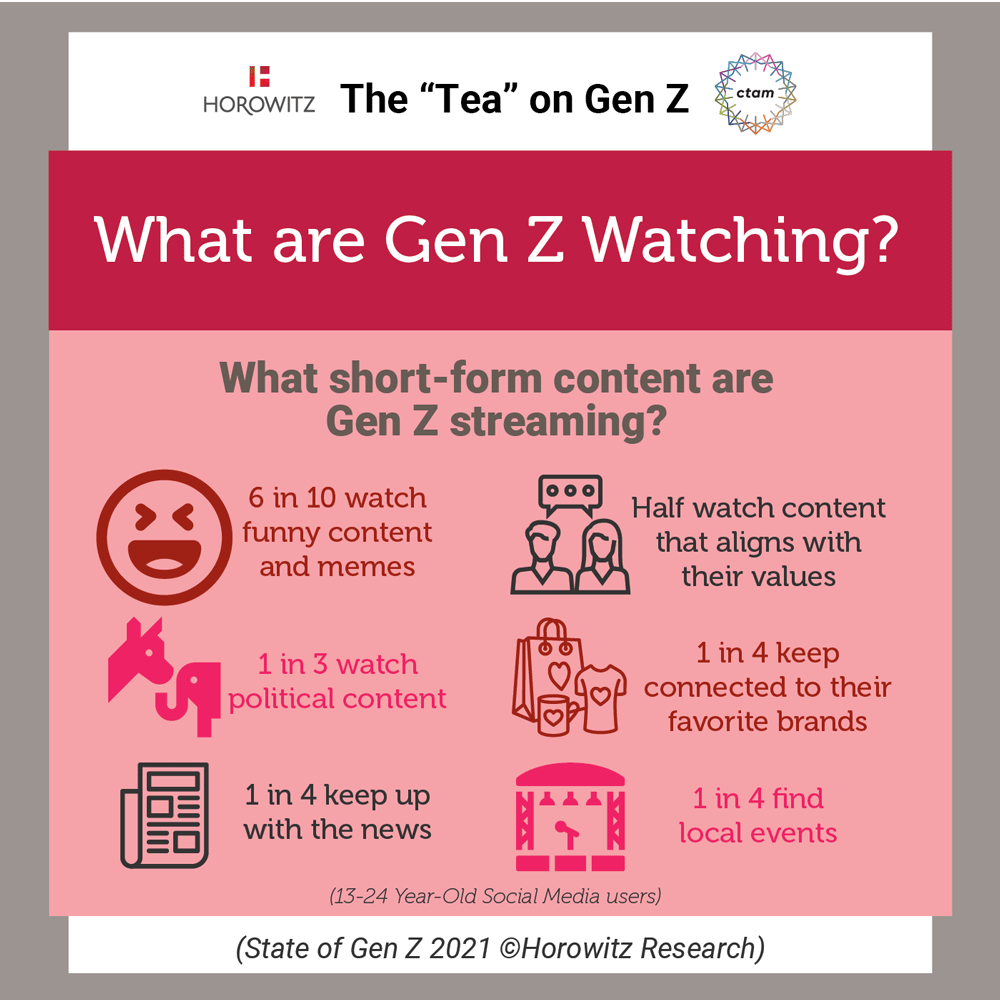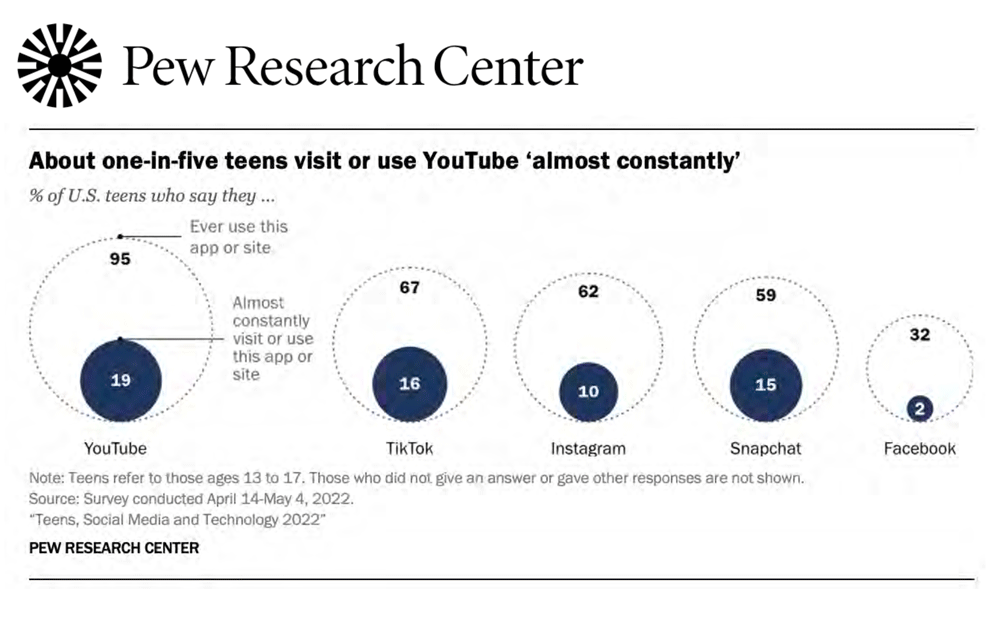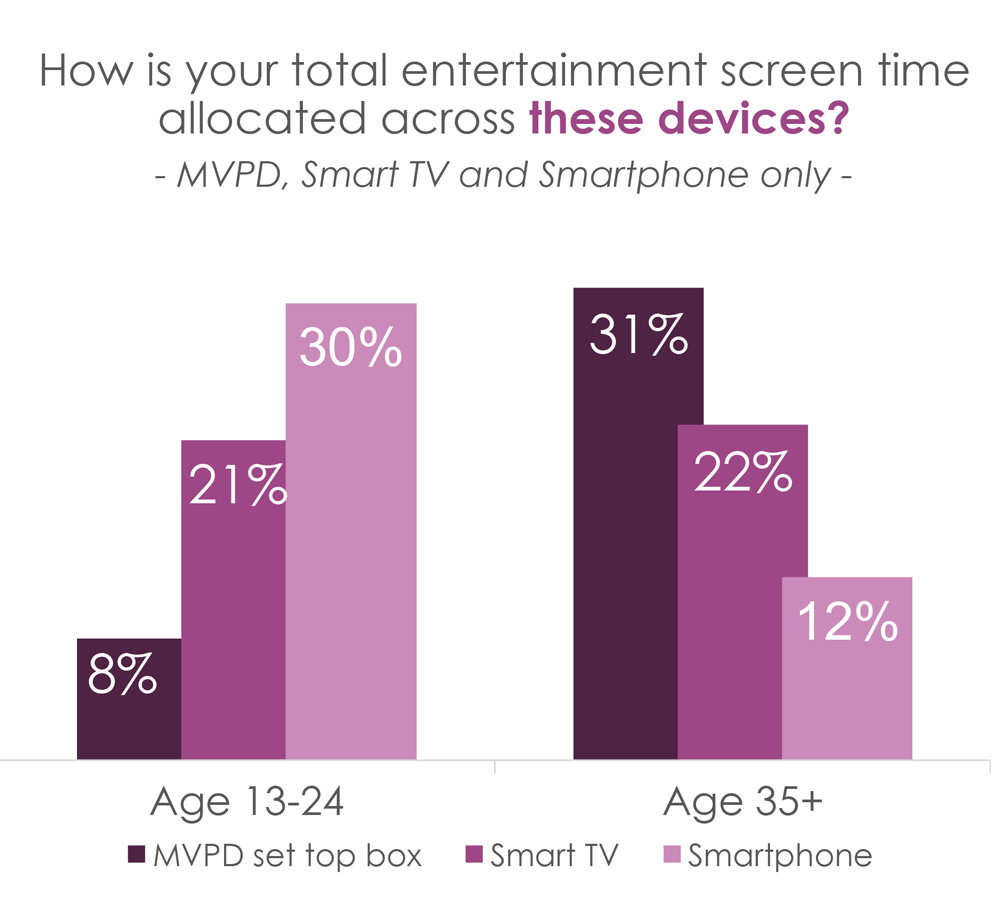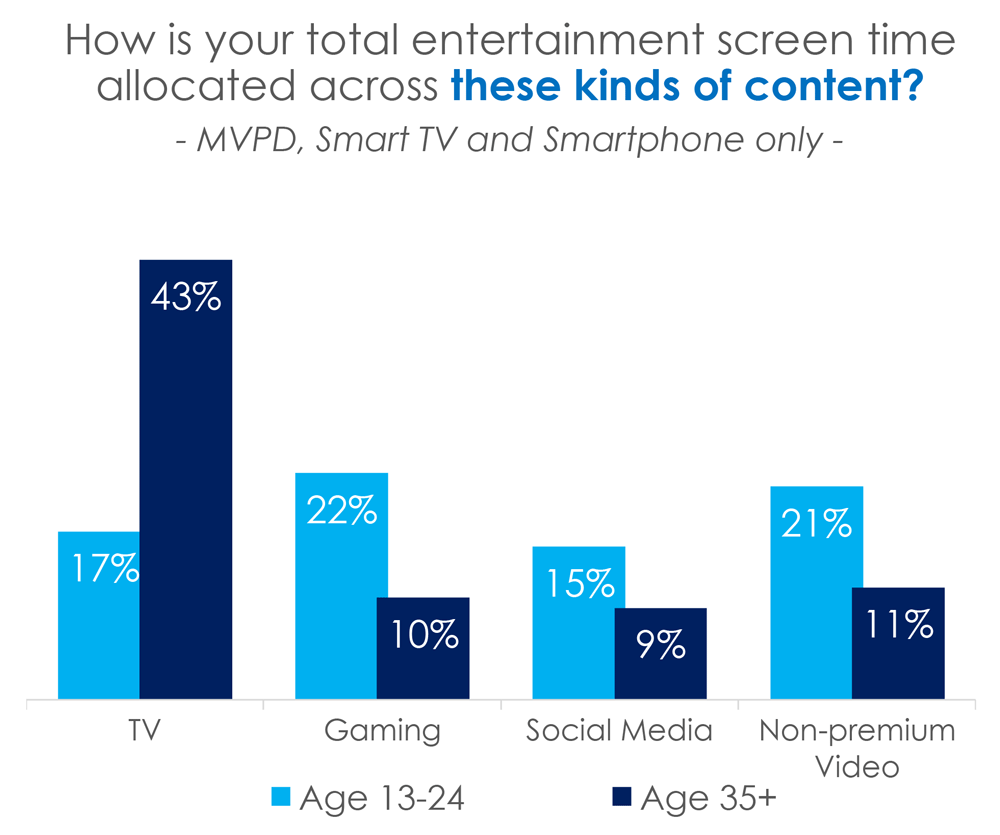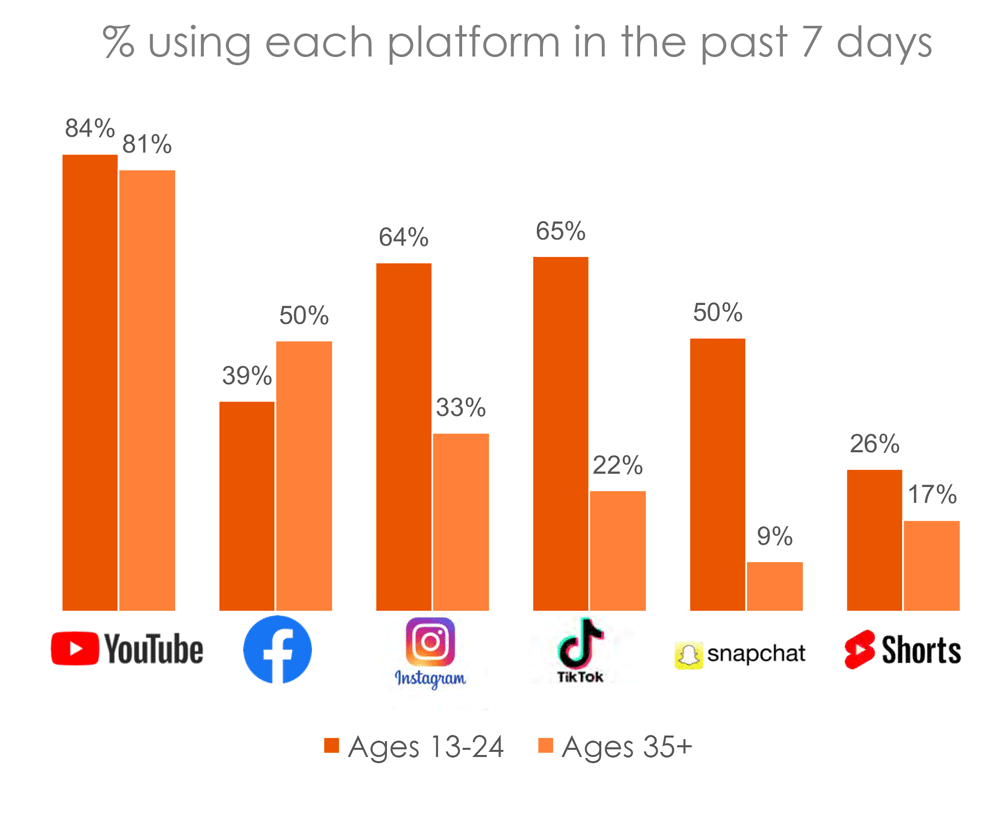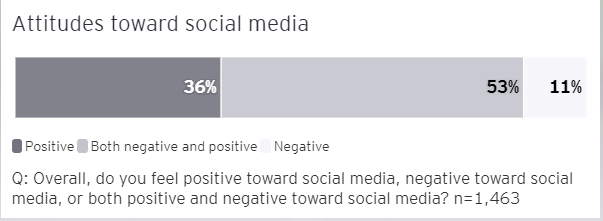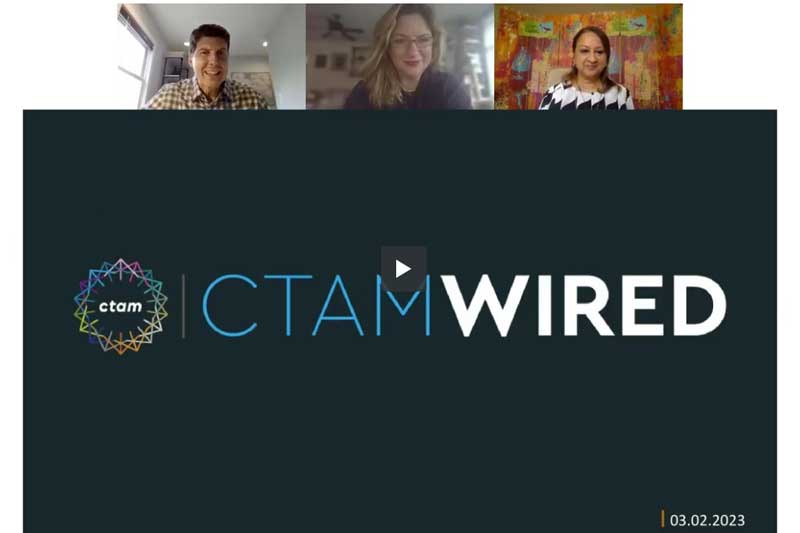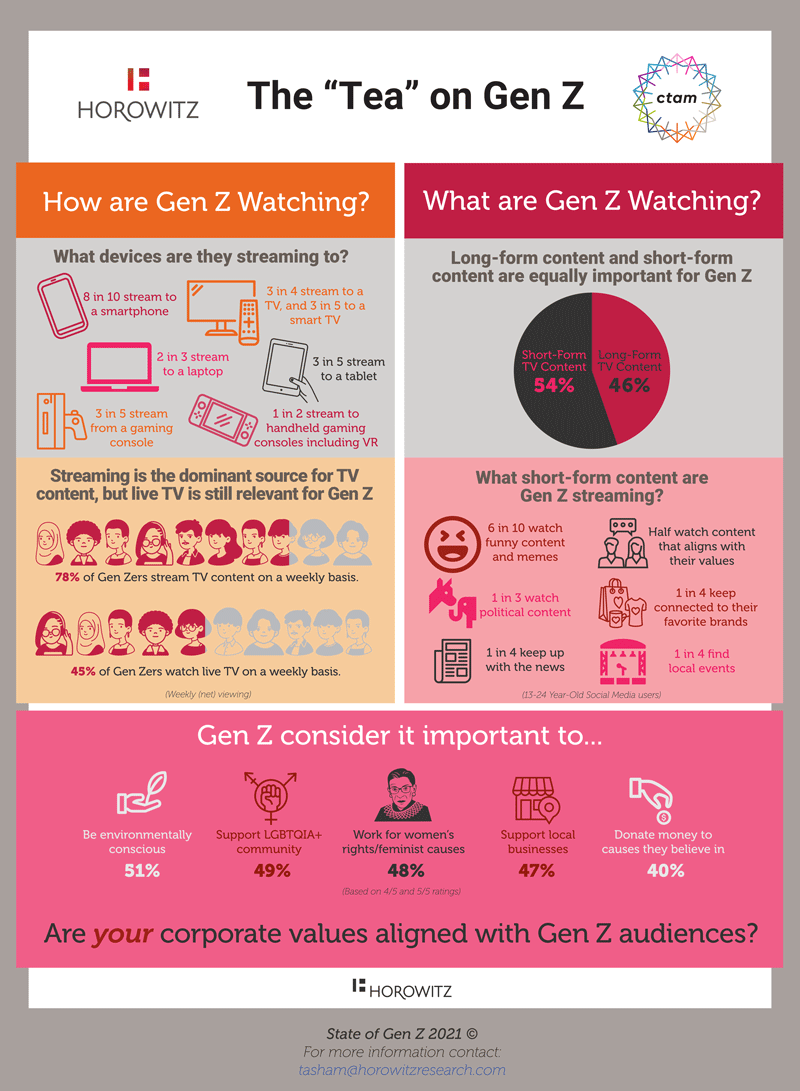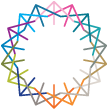
Successful Generation Z marketing strategies are adapting to this generation’s 8 second attention span and how they consume content, as well as their ideological differences. Explore how recent events are shaping Generation Z behaviors and attitudes around media, video content, brand relationships, lifestyles, beliefs and their future outlook.
Who is Generation Z?

Generation Z (aka Gen Z, iGen, centennials, post-Millennials, or homeland generation), refers to the generation that was born between 1997-2012. This generation has been raised on the internet and social media, with some of the oldest finishing college by 2020 and entering the workforce.
This generation has been raised on the Internet with multiple screens, social media, and streaming, not to mention experiencing a global pandemic during their formative years. Some of the oldest are entering the workforce, starting families and developing long-term goals to better shape their future.
- There are 68.6 million Gen Zs living in the United States making up 20% of the US population. (US Census, 2023)
- Gen Z will become majority non-white in the US by 2026 with 22% of American Gen Zs having at least one immigrant parent. (Pew Research, 2023)
- 57% of American Gen Z adults are enrolled in college and are set to become the most educated generation in history. (Pew Research, 2023)
- Gen Z is growing up with 38% of Gen Zs having entered the workforce. (GWI, 2023)
- However, Gen Zs are also delaying starting families with only 11% married or with children (Exploding Topics, 2023)
Gen Z Purchasing Power:
- Gen Z – which includes today’s teenagers and young 20-somethings – currently makes up 26% of the U.S. population and is expected to account for about 40% of all consumer markets. (Forbes)
- 40 million Gen Z are adults as of 2023, with 70.8% of 20- to 24-year-olds in the workforce creating an annual purchasing power of $44B. (US Bureau of Labor Statistics)
- Gen Z to surpass Gen X in the number of digital buyers by 2025. (Insider Intelligence, 2023)
Gen Z Statistics
Media & Entertainment:
- Average Gen Z attention span = 8 seconds (Source: Sparks & Honey)
- Streaming: How Gen Zers (ages 13 – 24) watch long-form and short-form video content daily. (Horowitz)
80%
Report streaming video to a smartphone
75%
Report streaming video to a TV set
67%
Report streaming video to a laptop
60%
Report streaming video to a smart TV
60%
Report streaming video to a gaming console
60%
Report streaming video to a tablet
50%
Report streaming video to handheld gaming consoles including VR
- The most watched genres among Gen Z viewers are reported to be movies, animated series/cartoons dramas, and music-related content (Horowitz, 2024)
- Long-form content (46%) and short-form content (54%) are equally important for Gen Z. (Horowitz Gen Z Study)
- Gen Z are most likely to stream short form content that are funny content and memes (60%), content that aligns with their values (50%), and political content (33%). (Horowitz Gen Z Study)
- Viewing Behaviors: Gen Z audiences prefer more engaging TV set experiences. (Horowitz)
![]() 66% occasionally text or direct message on social media about shows they are watching.
66% occasionally text or direct message on social media about shows they are watching.
![]() 60% report watching TV shows simultaneously with peers in different households, virtually discussing the show through messaging, social media, or co-viewing online experiences.
60% report watching TV shows simultaneously with peers in different households, virtually discussing the show through messaging, social media, or co-viewing online experiences.
![]() 56% are interested in co-viewing experiences like Netflix Party and Hulu Watch Party.
56% are interested in co-viewing experiences like Netflix Party and Hulu Watch Party.
- The typical Gen Z streamer now utilizes over six streaming services, a noticeable increase from the five used in 2020. (Horowitz, 2024)
- The Roku Channel, Tubi, and Pluto TV are emerging as the most favored FAST services within the Gen Z demographic, noting an increase in FAST TV usage. (Horowitz, 2024)
- Gen Z audiences are equally engaging with professionally produced TV content as they are to engage with non-professional content. (Horowitz, 2024)
- Approximately 80% of the demographic state that they watch short-form videos on a weekly basis, with 70% indicating that they regularly consume TV content every week. (Horowitz, 2024)
- About one-in-five U.S. teens visit or use YouTube ‘almost constantly’ (Pew Research Center, 2022).
- For many young viewers, smartphones are the starting point for entertainment with almost a third (30%) of viewers ages 13-24 allocating almost one-third of their entertainment time to content on phones. (Hub Entertainment Research, Video Redefined Study – Dec. 2022)
- Young viewers spend far more time than older ones on gaming, online video and social media – and less than half as much on traditional TV. (Hub Entertainment Research, Video Redefined Study – Dec. 2022)
Social Media:
- 43% said media content helped drive their acceptance of others’ gender identities and sexualities. (Hub Entertainment Research, 2023)
- 54% said digital media content have influenced what they think about gender and sexuality. (Hub Entertainment Research, 2023)
- Instead of using social media for projecting, a majority of Gen Z use it to communicate with two-thirds saying that their relationships with friends have actually become stronger or haven’t changed over the COVID-19 pandemic. (EY, 2023)
- 74% of Gen Z use social media apps to communicate more often with their friends (EY, 2023)
- Gen Zs prefer Instagram over TikTok for most social activities with 76% of Gen Zs using Instagram to post or share content compared to just 45% who use TikTok to do the same (GWI, 2023)
- However, TikTok is used more so for entertainment with 81% of Gen Z using it to find funny or entertaining content compared to 67% for Instagram. (GWI, 2023)
- 64% of Gen Zs use Instagram at least once per day and is the top social media platform for Gen Zs globally. (GWI, 2023)
Top Gen Z Social Media Platforms
using daily
using daily
using daily
- Two-thirds (65%) of young consumers use TikTok, second only to YouTube (84%). (Hub Entertainment Research, Video Redefined Study – Dec. 2022)
- Over one-third of social media influencers are Gen Zs commanding the highest fee for sponsored posts (Klear, 2023)
- 42% of Gen Zs have taken a break from social media for at least 24 hours with 58% saying “less than a day” and 22% saying a week or longer. (EY, 2023)
Advertising:
- 1-in-3 (34%) of Gen Zs follow their favorite brands on social media, and are more likely to follow brands than influencers (30%). (GWI, 2023)
- When it comes to product research, 69% of Gen Zs turn to Instagram while just 46% use TikTok. (GWI, 2023)
- Sixty-seven percent of Gen Z and Millennial consumers recall seeing out of home advertising on social media, and 91% Gen Zers and 82% of Millennials say they would reshare OOH ads on social. (OOH Media Opportunities: Consumer Insights and Intent Report)
- A majority (82%) of both Gen Zers and Millennials say they are open to seeing some type of ad within VR or AR, and 72% of US adults in larger urban centers say the same. (OOH Media Opportunities: Consumer Insights and Intent Report)
Marketing to Gen Z
From CTAM Wired Webcast: Passing the Gender Equality Vibe Check with Gen Z
ANA/Horowitz Research
- Don’t Label Gen Z
40% of Gen Z say labels should be chosen by the individual, not society - Roles are Not Gender Driven
Over 50% of Gen Z says both male and female identifying people can do anything from using makeup, to doing heavy manual labor, to being emotional, to having careers in STEM. - Disappearing Binary, Emerging Fluidity
50% of Gen Z says gender is non-binary. 64% say sexuality is fluid. - Allyship: “You Be You & Let Me Be Me”
88% of Gen Z disagrees that increased acceptance of non-traditional ways of thinking about gender and sexuality is bad for society. - Brand Authenticity
46% of Gen Z say to trust a brand, it’s not enough for them to claim support . . .but show it in action. And 47% say it feels like pandering when a brand makes ads focused on a cause that they’re not involved in.
Gen Z Resources
CTAM Wired – Passing the Gender Equality Vibe Check with Gen Z: From Truth to Trust
Discover the truth about Gen Z views on identity, gender and gender roles, and sexuality to better direct how marketers and media companies can strategically craft on-point connections by building trust through accurate marketing representation.
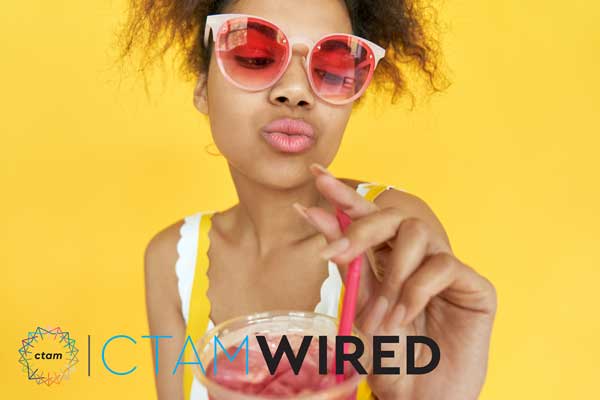
State of Gen Z Study

This study provides a comprehensive look at Gen Z’s relationship and behaviors around video content (long form, user generated, eSports, etc.), entertainment, relationship with brands, and what brands needs to consider when looking to engage these politically aware digital natives.


